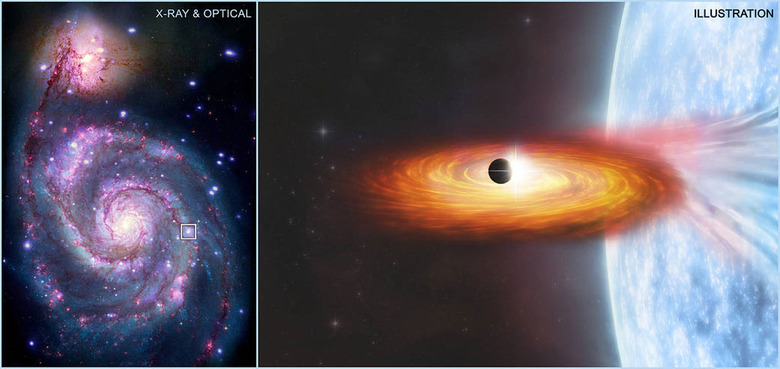Astronomers Have Discovered An Exoplanet Candidate In Messier 51
NASA has announced that scientists have discovered a planet transiting a star that lies outside the Milky Way galaxy for the first time. The exoplanet candidate was discovered orbiting a star in a spiral galaxy called Messier 51 (M51). That galaxy is also known as the Whirlpool Galaxy because of its distinctive appearance.
Any planet outside of our solar system is described as an exoplanet, and so far, all exoplanet and exoplanet candidates discovered have been within our own Milky Way galaxy. All of the planets discovered so far have been less than 3000 light-years away from Earth. However, the new exoplanet candidate in M51 is significantly more distant at about 28 million light-years away.
Researcher Roseanne Di Stefano, who led the study that discovered the exoplanet candidate, says she and her team are attempting to open a new arena to discover exoplanets at x-ray wavelengths. Using their strategy, it's possible to discover exoplanets in other galaxies. Their discovery is based on transits, occurring when planets pass in front of their host star, and the star decreases in brightness momentarily. Typically, astronomers are looking for dips in visible light, but Di Stefano and colleagues are searching for dips in the brightness for x-ray bright binaries.
Typically, x-ray bright binaries contain either a neutron star or a black hole consuming material from a nearby companion star. In that instance, material near the neutron star or black hole is superheated, making it glow in x-ray wavelengths. In such systems, the region of the system producing bright x-rays is small, allowing the planet to transit in front of it, and the x-rays can completely disappear.

Using the new technique, scientists can discover exoplanets at a much greater distance than is possible with current transit studies relying on optical light. Using the method, the team detected the new exoplanet candidate in the system called M51-ULS-1. The system includes a black hole or neutron star that orbits a companion star with a mass of about 20 times the Sun. However, scientists warned that it could be decades before observing another transit to confirm the finding.
